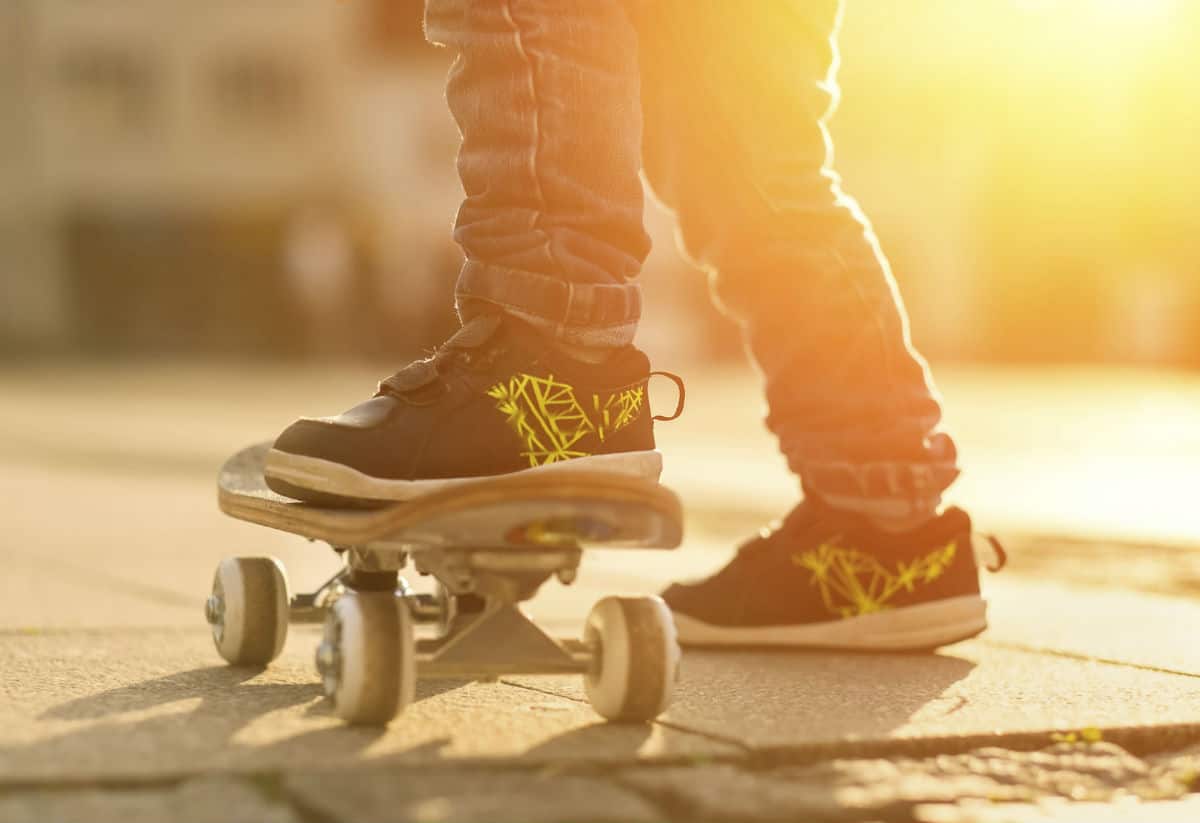Skateboarding is a common recreational sport among children that requires skill and practice.

Skateboarding-Related Statistics
According to the U.S. Consumer Product Safety Commission (CPSC), skateboarding accidents send about 300,000 victims to emergency rooms every year. About half of all skateboarding accident victims are between the ages of ten and fourteen and around one third of all skateboarding injuries are caused due to lack of protective safety gear to prevent any kind of trauma. Two out of five skateboard-injury cases are caused by a lack of experience in riding.
Causes of Skateboarding Injuries
- Manufacturing defects – Manufacturing defects can cause a number of issues such as imbalance and incorrect functioning of brakes, leading to minor or severe injuries.
- Inadequate warnings – Some skateboards do not come with adequate warnings. For example, some skateboards do not include age specifications that inform users about the correct age for using a skateboard. According to pediatricians, skateboards should be used by children above the age of 12.
- Inexperience – Children who buy skateboards are often inexperienced or first-time users. A significant number of injuries involve individuals who borrow the skateboard from a friend for fun.
- Lack of adult supervision – Children who are learning to ride skateboards should be accompanied by adults. Skateboarders are often seen riding their boards on sidewalks and on the roads and are exposed to risks of accidents with motor vehicles.
- Lack of protective gear – Many riders are observed not using adequate protective gear. Helmets, wrist bands, knee pads, and elbow pads are essential protective gear that can help minimize serious injury, especially to the head.
Preventing Skateboarding Accidents
It is important that skateboarders keep the following pointers in mind to avoid skateboarding accidents.
- Parents should buy age appropriate skateboards for their children. The popular boards might not always be the correct ones to use.
- Skill level is an important consideration and parents should insist on buying skill level appropriate boards.
- Parents should communicate safety practices with skateboard users.
For new users of skateboards, falls are common. Parents should be vigilant in case of falls and keep an eye out for any TBI-related symptoms that skateboard users may exhibit after a fall. Minor TBIs that go unchecked can become debilitating disabilities.
TBIs Suffered in Extreme Sports
Extreme sports enthusiasts expose themselves to injuries every time they attempt tricks on skateboards, wakeboards, or engage in other extreme activities. Some young people do not wear a helmet as they feel it hampers their sense of thrill and invincibility. No wonder extreme sports are leading to a high number of injuries and concussions. Considering the damaging and long lasting impact of traumatic brain injuries, it is important to take appropriate preventive measures.
About Traumatic Brain Injury
Traumatic brain injury (TBI) is the damage to a person’s brain from head trauma. It is most often caused by a blow or a bump to the head. However, not every head trauma will result in TBI. The force of impact will determine whether or not TBI occurs and its severity. According to the Center for Disease Control (CDC), TBI is one of the leading causes of death and disability in the United States.
Injuries During Extreme Sports
The most common injuries associated with extreme sports are broken bones and bruising. When a bike rider or skateboarder falls, they risk hitting the hard surface with any of their body parts. If your head hits against a hard surface such as pavement or concrete, the chances of a brain injury become high.
Concussion is the most common form of TBI. Concussion is dangerous and can cause symptoms such as disturbed vision, lack of balance, and unconsciousness. A single concussion may not have lasting consequences, but an accumulation of concussions can result in lasting damage. A skateboarder who suffers repeated head trauma from falls can develop permanent brain damage. It is important to note that even individuals who wear a helmet may also suffer a TBI. If the helmet is defective, the person wearing it will still be at risk of a TBI. This is particularly true for children.
Symptoms of TBIs
The symptoms of TBI can make it difficult for a victim to carry out even simple day-to-day tasks or to maintain a basic standard of living.
- cognitive problems associated with learning, memory, speaking, and reading
- communication problems
- emotional and behavioral changes
- seizures
- vegetative state or coma
- death
Chicago Traumatic Brain Injury Lawyer
If your child suffers a traumatic brain injury caused by negligence, consult a Chicago traumatic brain injury attorney to protect your legal rights. Call Willens & Baez at (312) 957-4166 for a free consultation.











